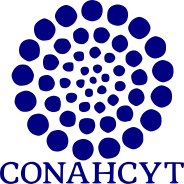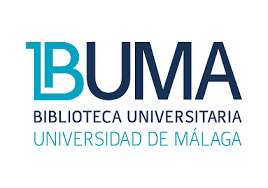Frequency and genetic variability of Fusarium oxysporum mating types
Palabras clave:
Chickpea, Idiomorphs, MAT1-1, MAT1-2, Wheat.Resumen
El género Fusarium comprende una gran cantidad de especies cosmopolitas, muchas de las cuales son patógenos importantes de cultivos de interés agronómico. El análisis molecular de los genes del tipo de apareamiento (MAT) es una herramienta útil para estudiar los estilos de vida reproductivos y las relaciones entre especies. El objetivo de la presente investigación fue determinar el tipo de idiomorfos de MAT (MAT1-1 y/o MAT1-2) en aislados de Fusarium oxysporum, F. nygamai, F. thapsinum y F. verticillioides obtenidos de 20 sitios distribuidos en la zona central de México afectando cultivos de trigo y de garbanzo, y evaluar su variabilidad de secuencias. Las reacciones de PCR de 110 aislados revelaron que 66 presentaron el idiomorfo MAT1-1 y 44 presentaron el idiomorfo MAT1-2, pero ningún aislado mostró ambos idiomorfos. Los idiomorfos MAT1-1 y MAT1-2, de diferentes o de la misma especie de Fusarium, coincidieron en el mismo campo de cultivo de varios sitios. Las secuencias seleccionadas de los dos idiomorfos mostraron mayor divergencia entre especies que dentro de la misma especie. Estos cambios fueron mayores en las regiones no codificantes que en las regiones codificantes. La variación de los genes de tipo de apareamiento y la coexistencia de ambos idiomorfos en el mismo sitio agrícola, apuntan a un posible futuro cambio en la virulencia de los aislados de Fusarium. En general, estos hallazgos ayudarán a comprender mejor la variabilidad genética de algunas especies de Fusarium en México.
Referencias
Arie, T., Christiansen, S. K., Yoder, O. C, & Turgeon, B. G. (1997). Efficient cloning of ascomycete mating type genes by PCR amplification of the conserved MAT HMG Box. Fungal Genetics and Biology, 21, 118-130. https://doi.org/10.1006/fgbi.1997.0961
Arie, T., Kaneko, I., Yoshida, T., Noguchi, M., Nomura, Y., & Yamaguchi, I., (2000). Mating-type genes from asexual phytopathogenic ascomycetes Fusarium oxysporum and Alternaria alternata. The American Phytopathological Society, 13, 1330-1339. http://dx.doi.org/10.1094/MPMI.2000.13.12.1330
Boix-Ruíz, A., Gálvez-Patón, L., de Cara-García, M., Palmero-Llamas, D., Camacho-Ferre F., & Tello-Marquina, C. (2015). Comparison of analytical techniques used to identify tomato-pathogenic strains of Fusarium oxysporum. Phytoparasitica, 43, 471-483. http://dx.doi.org/10.1007/s12600-014-0444-z.
Christiansen, S. K., Wirsel, S., Yun, S. H., Yoder, O. C., & Turgeon, B. G. (1998). The two Cochliobolus mating-type genes are con¬served among species bur one of them is missing in C. vic¬toriae. Mycological Research, 102(8), 919-929. doi: 10.1017/S0953756297005674
Cisar, C. R., TeBeest, D. O., & Spiegel, F. W. (1994). Sequence similarity of mating type idiomorphs: a method which detects similarity among the Sordariaceae fails to detect similar sequences in other filamentous ascomycetes. Mycologia, 86, 540-546. doi: 10.2307/3760747
Clark, N. L., Aagaard, J. E., & Swanson, W. J. (2006). Evolution of reproductive proteins from animals and plants. Reproduction, 131, 11-22. https://doi.org/10.1530/rep.1.00357
Coppin, E., Debuchy, R., Arnaise, S., & Picard, M. (1997). Mating types and sexual development in filamentous ascomycetes. Microbiology and Molecular Biology Reviews, 61, 411-428.
Covarelli, L., Stifano, S., Beccari, G., Raggi, L., Lattanzio, V. M. T., & Albertini, E. (2012). Characterization of Fusarium verticillioides strains isolated from maize in Italy: Fumonisin production, pathogenicity and genetic variability. Food Microbiology, 31, 17-24. https://doi.org/10.1016/j.fm.2012.02.002
Doyle, J. J., & Doyle, J. L. (1987). A rapid DNA isolation procedure for small quantities of fresh leaf tissue. Phytochemistry Bulletin, 19, 11-15.
Fourie, G., Steenkamp, E. T., Gordon, T. R., & Viljoen, A. (2009). Evolutionary relationships among the Fusarium oxysporum f. sp. cubense vegetative compatibility groups. Applied and Environmental Microbiology, 75, 4770-4781.
Friesen, T. L., Faris, J. D., Solomon, P. S., & Oliver, R.P. (2008). Host-specific toxins: effectors of necrotrophic pathogenicity. Cellular Microbiology, 10, 1421-1428. https://doi.org/10.1111/j.1462-5822.2008.01153.x
Geiser, D. M., Aoki, T., Bacon, C. W., Baker, S. E., Bhattacharyya, M. K., Brandt, M. E., Brown, D. W., Burgess, L. W., Chulze, S., Coleman, J. J., Correll, J. C., Covert, S. F., Crous, P. W., Cuomo, C. A., De Hoog, G. S., Di Pietro, A., Elmer, W. H., Epstein, L., Frandsen, R. J. N., Freeman, S., Gagkaeva, T., Glenn, A. E., Gordon, T. R., Gregory, N. F., Hammond-Kosack, K. E., Hanson, L. E., Jimenez-Gasco, M. M., Kang, S., Kistler, H. C., Kuldau, G. A., Leslie, J., Logrieco, A., Lu, G., Lysoe, E., Ma, L. J., McCormick, S. P., Migheli, Q., Moretti, A., Munaut, F., O’Donnell K., Pfenning, L., Ploetz, R. C., Proctor, R. H., Rehner, S. A., Robert, V. A. R. G., Rooney, A. P., Salleh, B. D., Scandiani, M. M., Scauflaire, J., Short, D. P. G., Steenkamp, E., Suga, H., Summerell, B. A., Sutton, D. A., Thrane, U., Trail, F., Van Diepeningen, A., VanEtten, H. D., Viljoen, A., Waalwijk, C., Ward, T. J., Wingfield, M. J., Xu, J. R., Yang, X. B., Yli-Mattila, T., & Zhang, N. (2013). One fungus, One name: defining the genus Fusarium in a scientifically robust way that preserves longstanding use. Phytopathology, 103, 400-408. https://doi.org/10.1094/PHYTO-07-12-0150-LE
Glass, N. L., Smith, M. L. (1994). Structure and function of a mating-type gene from the homothallic species Neurospora africana. Molecular and General Genetics, 244, 401-409. https://doi.org/10.1007/BF00286692
Gordon, T. R., & Martyn, R. D. (1997). The evolutionary biology of Fusarium oxysporum. Annual Review of Phytopathology, 35, 111-128. https://doi.org/10.1146/annurev.phyto.35.1.111
Hall, T. A. (1999). BioEdit: a user-friendly biological sequence editor and analysis program for windows 95/98/NT. Nucleic Acids Symposium Series, 41, 95-98.
He, C. Z., Rusu, A. G., Poplawski, A. M., Irwin, J. A. G., Manners, J. M. (1998). Transfer of a supernumerary chromosome between vegetatively incompatible biotypes of the fungus Colletotrichum gloeosporioides. Genetics, 150, 1459-1466.
Irzykowska, L., & Kosiada, T. (2011). Molecular identification of mating type genes in asexually reproducing Fusarium oxysporum and F. culmorum. Journal of Plant Protection Research, 51, 405-409. http://dx.doi.org/10.2478/v10045-011-0066-0
Jiménez-Gasco, M. M., Navas-Cortés, J. A, & Jiménez-Díaz, R. M. (2004). The Fusarium oxysporum f. sp. ciceris/Cicer arietinum pathosystem: a case study of the evolution of plant-pathogenic fungi into races and pathotypes. International Microbiology, 7, 95-104.
Kang, S., Demers, J., Jimenez-Gasco, M. M., & Rep, M. (2014). Fusarium oxysporum. In: R. A., Dean, A., Linchens-Park, & C. Kole (Eds), Genomics of Plant-Associated Fungi and Oomycetes: Dicot Pathogens (pp. 99-119). Springer-Verlag Berlin Heidelberg. http://dx.doi.org/10.1007/978-3-662-44056-8_5
Karényi, Z., Zeller, K., Hornok, L., & Leslie, J. F. (1999). Molecular standardization of mating type terminology in the Gibberella fujikuroi species complex. Applied Environmental Microbiology, 65 (9), 4071-4076.
Kashyap, P. L., Rai, S., Kumar, S., & Srivastava, A. K. (2016). Genetic diversity, mating types and phylogenetic analysis of Indian races of Fusarium oxysporum f. sp. ciceris from chickpea. Archives of Phytopathology and Plant Protection, 49, 533-553. http://dx.doi.org/10.1080/03235408.2016.1243024
Kawabe, M., Katsube, K., Yoshida, T., Arie, T., & Tsuchiya, K. (2007). Genetic diversity of Fusarium oxysporum f. sp. spinaciae in Japan based on phylogenetic analyses of rDNA-IGS and MAT1 sequences. Journal of General Plant Pathology, 73, 353-359. https://doi.org/10.1007/s10327-007-0036-6
Kawabe, M., Kobayashi, Y., Okada, G., Yamaguchi, I., Teraoka, T., & Arie, T. (2005). Three evolutionary lineages of tomato wilt pathogen, Fusarium oxysporum f. sp. lycopersici, based on sequences of IGS, MAT1, and pg1, are each composed of isolates of a single mating type and a single or closely related vegetative compatibility group. Journal of General Plant Pathology, 71, 263-272. https://doi.org/10.1007/s10327-005-0203-6
Kerényi, Z., Moretti, A., Waalwijk, C., Oláh, B., & Hornok, L. (2004). Mating type sequences in asexually reproducing Fusarium species. Applied Environmental Microbiology, 70, 4419-4423.
Khaldi, N., Collemare, J., Lebrun, M. H., & Wolfe, K. H. (2008). Evidence for horizontal transfer of a secondary metabolite gene cluster between fungi. Genome Biology, 9, R18. https://doi.org/10.1186/gb-2008-9-1-r18
Leslie, J. F., Zeller, K. A., Lamprecht, S. C., Rheeder, J. P., & Marasas, W. F. O. (2005). Toxicity, pathogenicity and genetic differentiation of five species of Fusarium from sorghum and millet. Phytopathology, 95, 275-283. https://doi.org/10.1094/PHYTO-95-0275
Li, K. N., Rouse, D. I., & German, T. L. (1994). PCR primers that allow intergeneric differentiation of ascomycetes and their application to Verticillium spp. Applied and Environmental Microbiology, 60, 4324-4331.
Lievens, B., Houterman, P. M., & Rep, M. (2009). Effector gene screening allows unambiguous identification of Fusarium oxysporum f. sp. lycopersici races and discrimination from other formae speciales. FEMS Microbiology Letters, 300, 201-215. https://doi.org/10.1111/j.1574-6968.2009.01783.x
Luna-Páez, A. H., Silva-Rojas, V., Marbán-Mendoza, N., & Valadez-Moctezuma, E. (2004). Variabilidad genética de Fusarium oxysporum Schlechtend.:Fr. f. sp. ciceris (Padwick) Matuo y K. Sato mediante PCR-RAPD’s en el Bajío, México. Revista Mexicana de Fitopatología 22: 44-51.
Ma, L. J., Geiser, D. M., Proctor, R. H., Rooney, A. P., O’Donnell, K., Trail, F., Gardiner, D. M., Manners, J. M., & Kazan, K. (2013). Fusarium pathogenomics. Annual Review of Microbiology, 67, 399-416. http://dx.doi.org/10.1146/annurev-micro-092412-155650
Madania, A., Altawil, M., Naffaa, W., Volker, P. H., & Hawat, M. (2013). Morphological and molecular characterization of Fusarium isolated from maize in Syria. Journal of Phytopathology, 161, 452-458. https://doi.org/10.1111/jph.12085
Martin, S. H., Wingfield, B. D., Wingfield, M. J., & Steenkamp, E. T. (2011). Structure and evolution of the Fusarium mating type locus: new insights from the Gibberella fujikuroi complex. Fungal Genetics and Biology, 48, 731-740. http://dx.doi.org/10.1016/j.fgb.2011.03.005
O’Donnell, K., Kistler, H. C., Cigelnik, E., & Ploetz, R. C. (199a8). Multiple evolutionary origins of the fungus causing Panama disease of banana: concordant evidence from nuclear and mitochondrial gene genealogies. Proceedings of the National Academy of Sciences of the United States of America 95, 2044-2049.
O’Donnell, K., Cigelnik, E., & Nirenberg, H. I. (1998b). Molecular systematic and phylogeography of the Gibberella fujikuroi species complex. Mycologia, 90, 465-493.
O’Donnell, K., Ward, T. J., Geiser, D. M., Kistler, H. C., & Aoki, T. (2004). Genealogical concordance between the mating type locus and seven other nuclear genes supports formal recognition of nine phylogenetically distinct species within the Fusarium graminearum clade. Fungal Genetics and Biology 41: 600-623; http://dx.doi.org/10.1016/j.fgb.2004.03.003
Rangel-Castillo, A. E., Valadez-Moctezuma, E., & Lozoya-Saldaña, H. (2017). Molecular characterization and pathogenesis of Fusarium associated to wheat yellowing. Revista Fitotecnia Mexicana 40 (4): 439-450.
Summerell, B. A., Leslie, J. F., Liew, E. C. Y., Laurence, M. H., Bullock, S., Petrovic, T., Bentley, A. R., Howard, C. G., Peterson, S. A., Walsh, J. L., & Burgess, L. W. (2011). Fusarium species associated with plants in Australia. Fungal Diversity, 46, 1-27. https://doi.org/10.1007/s13225010-0075-8
Swanson, W. J., & Vacquier, V. D. (2002). The rapid evolution of reproductive proteins. Nature Review Genetics, 3, 137-144.
Tamura, K., Stecher, G., Peterson, D., Filipski, A., & Kumar, S. (2013). MEGA6: Molecular Evolutionary Genetics Analysis version 6.0. Molecular Biology and Evolution, 30, 2725-2729. https://doi.org/10.1093/molbev/mst197
Turgeon, B. G. (1998). Application of mating type gene technology to problems in fungal biology. Annual Review of Phytopathology, 36, 115-137. https://doi.org/10.1146/annurev.phyto.36.1.115
Turgeon, B. J., & Yoder, O. C. (2000). Proposed nomenclature for mating type genes of filamentous ascomycetes. Fungal Genetics and Biology, 31, 1-5. http://dx.doi.org/10.1006/fgbi.2000.1227
Waalwijk, C., Keszthelyi, A., Van der Lee, T., Jeney, A., De Vries, I., Kerenyi, Z., Hornok, L. (2006). Mating type loci in Fusarium: structure and function. Mycotoxin Research, 22, 54-60. http://dx.doi.org/10.1007/BF02954558
Waalwijk, C., Vanheule, A., Audenaert, K., Zhang, H., Warris, S., van de Geest, H., & van der Lee, T. (2017). Fusarium in the age of genomics. Tropical plant pathology, 42, 184-189. https://doi.org/10.1007/s40858-017-0128-6
Wik, L., Karlsson, M., & Johannesson, H. (2008). The evolutionary trajectory of the mating-type (MAT) genes in Neurospora relates to reproductive behavior of taxa. BMC Evolutionary Biology, 8, 109. https://doi.org/10.1186/1471-2148-8-109
Yun, S. W., Arie, T., Kaneko, I., Yoder, O. C., Turgeon, B. G. (2000). Molecular organization of mating type loci in heterothallic, homothallic, and asexual Gibberella/Fusarium species. Fungal Genetics and Biology, 31, 7-20. http://dx.doi.org/10.1006/fgbi.2000.1226
Publicado
Número
Sección
Licencia

Polibotánica por Departamento de Botánica de la Escuela Nacional de Ciencias Biológicas del Instituto Politécnico Nacional se distribuye bajo una Licencia Creative Commons Atribución-NoComercial-CompartirIgual 4.0 Internacional.




















